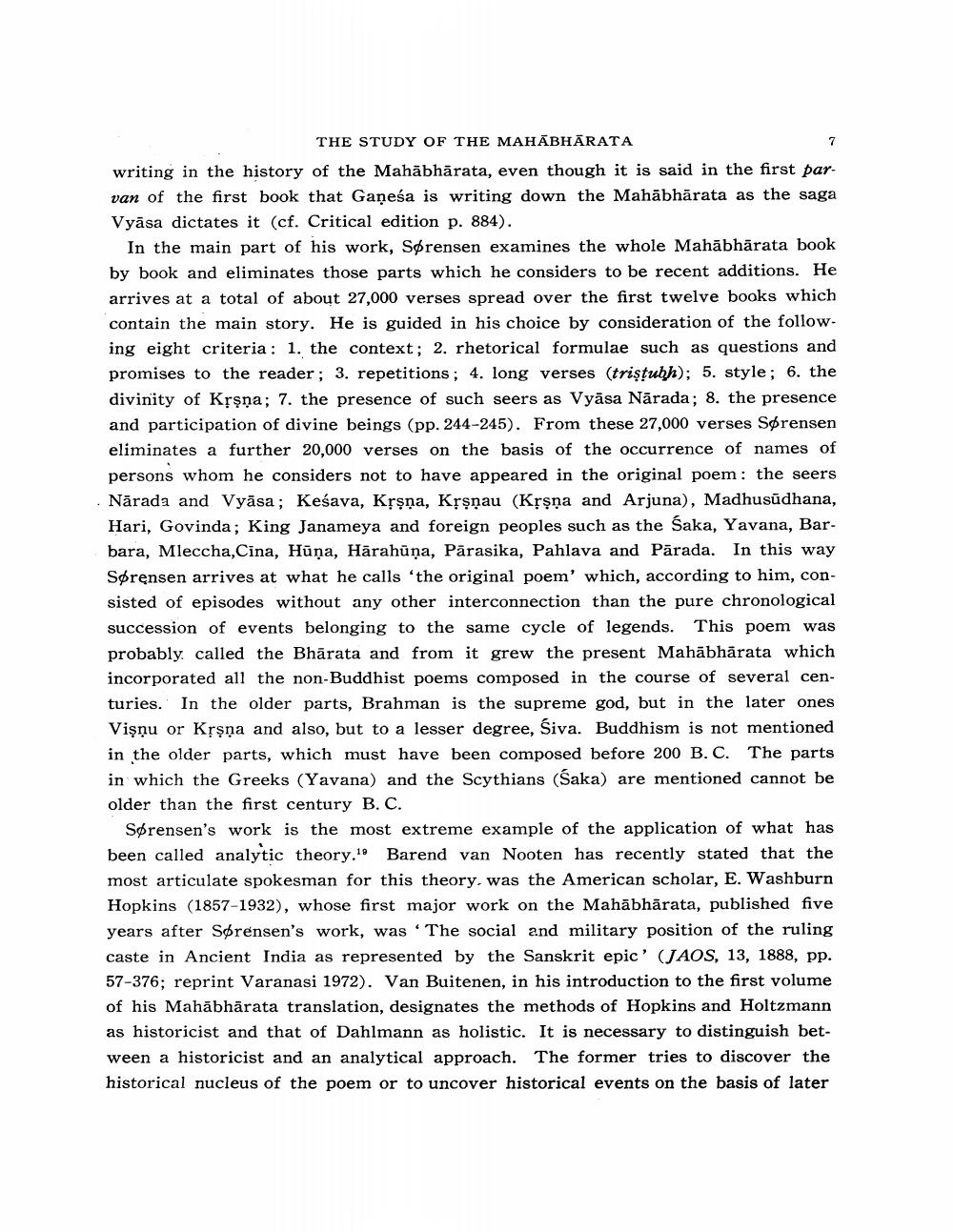Book Title: Study Of Mahabharata Author(s): J W De Jong Publisher: J W De Jong View full book textPage 7
________________ THE STUDY OF THE MAHABHARATA writing in the history of the Mahābhārata, even though it is said in the first parvan of the first book that Ganesa is writing down the Mahābhārata as the saga Vyāsa dictates it (cf. Critical edition p. 884). In the main part of his work, Sørensen examines the whole Mahābhārata book by book and eliminates those parts which he considers to be recent additions. He arrives at a total of about 27,000 verses spread over the first twelve books which contain the main story. He is guided in his choice by consideration of the following eight criteria : 1. the context; 2. rhetorical formulae such as questions and promises to the reader; 3. repetitions ; 4. long verses (triştubh); 5. style; 6. the divinity of Krşņa; 7. the presence of such seers as Vyāsa Nārada; 8. the presence and participation of divine beings (pp. 244-245). From these 27,000 verses Sørensen eliminates a further 20,000 verses on the basis of the occurrence of names of persons whom he considers not to have appeared in the original poem: the seers Nārada and Vyāsa; Keśava, Kșşņa, Krşņau (Krşņa and Arjuna), Madhusudhana, Hari, Govinda; King Janameya and foreign peoples such as the Saka, Yavana, Barbara, Mleccha,Cina, Hūņa, Hārahūņa, Pārasika, Pahlava and Pārada. In this way Sørensen arrives at what he calls 'the original poem' which, according to him, consisted of episodes without any other interconnection than the pure chronological succession of events belonging to the same cycle of legends. This poem was probably called the Bhārata and from it grew the present Mahābhārata which incorporated all the non-Buddhist poems composed in the course of several centuries. In the older parts, Brahman is the supreme god, but in the later ones Vişņu or Krsna and also, but to a lesser degree, Siva. Buddhism is not mentioned in the older parts, which must have been composed before 200 B. C. The parts in which the Greeks (Yavana) and the Scythians (Saka) are mentioned cannot be older than the first century B.C. Sørensen's work is the most extreme example of the application of what has been called analytic theory.'' Barend van Nooten has recently stated that the most articulate spokesman for this theory. was the American scholar, E. Washburn Hopkins (1857-1932), whose first major work on the Mahābhārata, published five years after Sørensen's work, was 'The social and military position of the ruling caste in Ancient India as represented by the Sanskrit epic' (JAOS, 13, 1888, pp. 57-376; reprint Varanasi 1972). Van Buitenen, in his introduction to the first volume of his Mahābhārata translation, designates the methods of Hopkins and Holtzmann as historicist and that of Dahlmann as holistic. It is necessary to distinguish between a historicist and an analytical approach. The former tries to discover the historical nucleus of the poem or to uncover historical events on the basis of laterPage Navigation
1 ... 5 6 7 8 9 10 11 12 13 14 15 16 17 18 19
